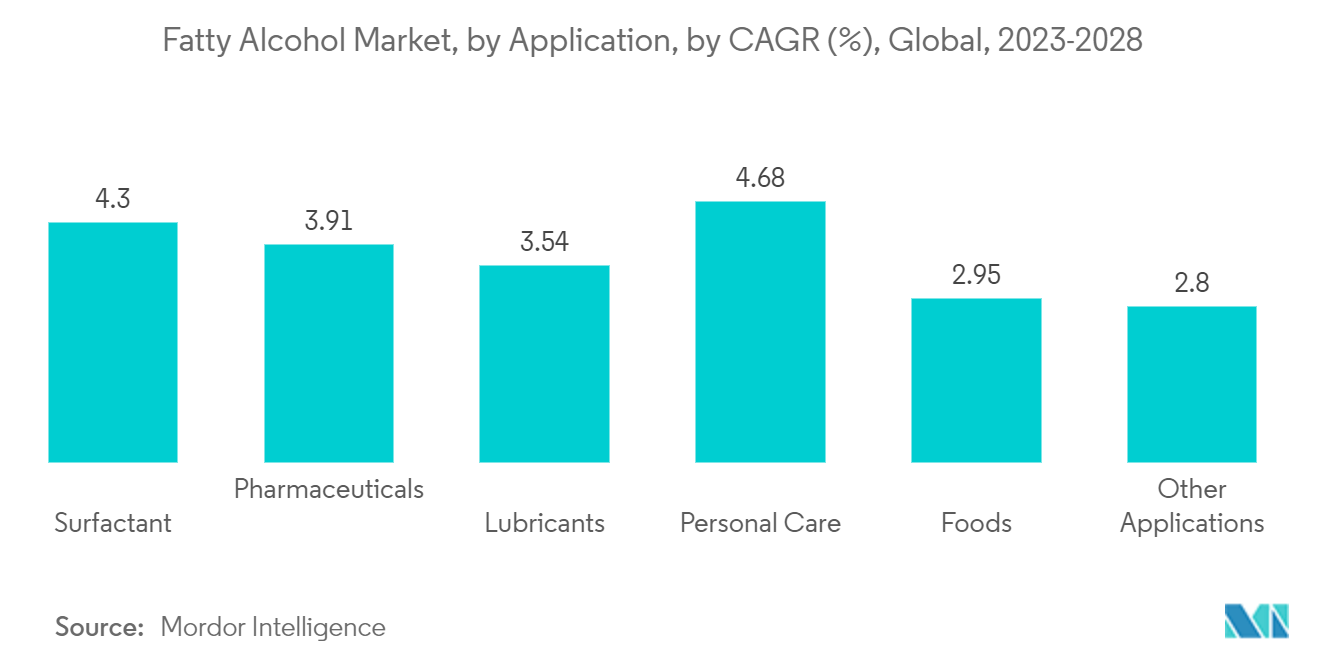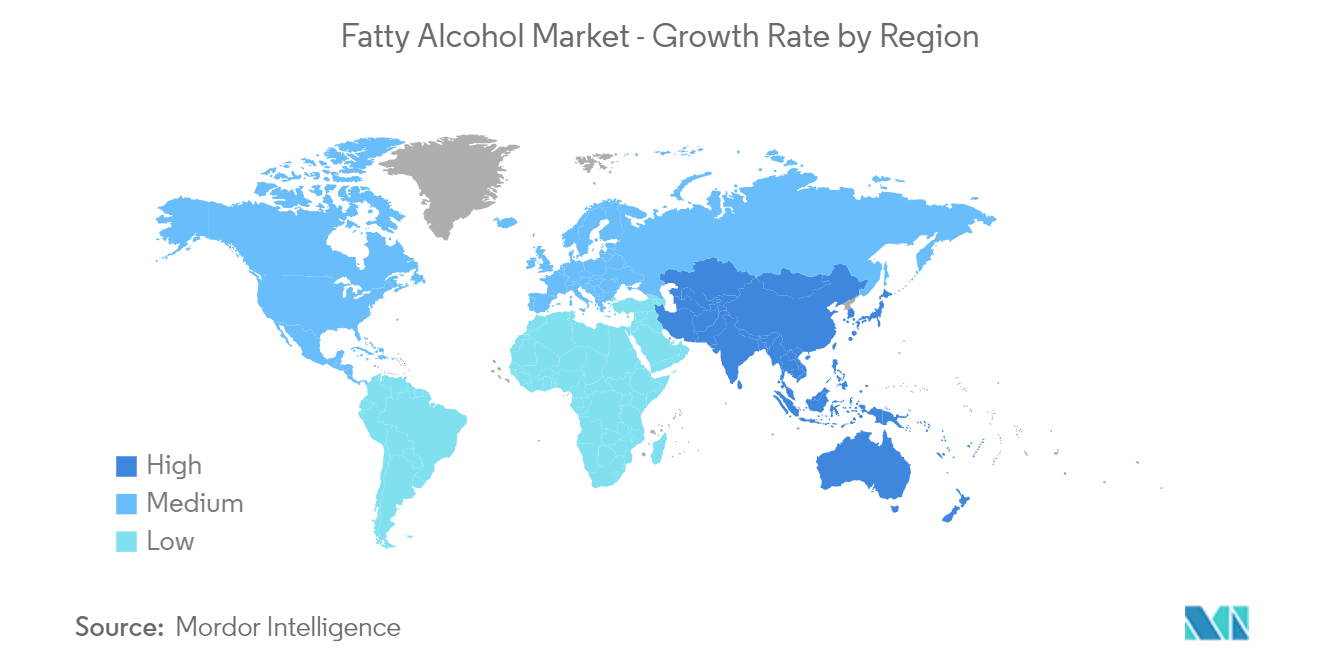Market Trends of Fatty Alcohol Industry
Surfactants Application to Dominate the Market
- Fatty alcohols are mainly used in the production of detergents and surfactants. Due to their amphipathic nature, fatty alcohols behave as nonionic surfactants.
- Fatty alcohol is primary alcohol from C6 to C22, usually straight-chain, which is the type used by the detergent industry. Modern detergents were initially based on surfactants made from fatty alcohol raw materials. These include natural fats, oils, and waxes, and more recently, high molecular weight alcohols have been produced synthetically from various hydrocarbon sources.
- A substantial majority of fatty alcohols worldwide are converted into surfactants or surface active agents, the basic materials used to produce laundry detergent, dishwashing detergent, and other household cleaning products.
- According to the International Trade Centre, Germany stands out as the largest exporter of soap and organic surface-active products, witnessing a substantial increase in export value from USD 11.82 billion in 2019 to USD 14.54 billion in 2022. This growth signifies a growing demand for these products in international markets, translating to increased demand for fatty acids as key components in producing surfactants.
- The output from the Chinese chemical industry is essential in various products, which include soaps, detergents, cosmetics, etc. The presence of over 60 washing, care, and cleaning agent manufacturers underscores this sector's competitive nature. Furthermore, with approximately 98.7 washing machines per one hundred households in China, there is a growing consumer base for cleaning products. The rise of Chinese household appliance producers and their focus on affordable products have increased access to washing machines, resulting in a higher demand for detergents.
- Moreover, India is one of the largest producers of soaps in the world. The per capita consumption of toilet/bathing soaps in the country is around 800 grams. The per capita consumption of toilet/bathing soaps, averaging around 800 grams, further indicates the country's steady demand for soap products. Additionally, the household and personal care segment accounts for around 50% share of the FMCG market in India. The consistent increase in the production of synthetic detergent intermediates, from 714.68 thousand metric tons in 2019 to over 780 thousand metric tons in FY 2022, indicates the rising demand for detergent products. Consequently, the demand for fatty acids as raw materials in surfactant production experiences growth alongside the expansion of the detergent market in India.
- These factors are expected to enhance the demand for fatty alcohol over the coming years.

Asia-Pacific Region to Dominate the Market
- The high demand from various industries, like surfactants, personal care and cosmetics, pharmaceuticals, and others, in major economies, such as China, India, and Japan, is estimated to boost the market studied during the forecast period.
- China is the second-largest consumer of cosmetic products across the world. According to a report by L'Oréal, the country generated a total of USD 55.3 billion in the beauty and personal care market in 2022. The country's beauty market witnessed a strong rebound in 2022 after facing a slowdown due to economic uncertainties, numerous lockdowns, and other pandemic policy changes.
- In China, the production of synthetic detergents is mainly concentrated in Guangdong, Zhejiang, and Sichuan, with an annual production capacity of 3.25 million tons, 1.14 million tons, and 1.09 million tons, respectively.
- The pharmaceutical industry in China is one of the largest in the world. The country is involved in the production of generics, therapeutic medicines, active pharmaceutical ingredients, and traditional Chinese medicine. More than 90% of the drugs registered in the country are generic. As of 2022, the country has a large and diverse domestic drug industry comprising around 5,000 manufacturers, many of which are small or medium-sized companies.
- According to the National Investment Promotion and Facilitation Agency (Invest India), India stands 8th in the beauty and personal care (BPC) market. Factors such as growing awareness, easier access, and changing lifestyles are driving the market. The personal hygiene market in India is expected to reach a value of USD 15 billion by the end of this year.
- The fatty acid methyl esters used in shampoos effectively remove soils, such as sebum and solid particulates, from the hair. According to the National Investment Promotion and Facilitation Agency (Invest India), the Indian hair care market is expected to reach a value of USD 4.89 billion with a CAGR of 6.6% in the next two years.
- To facilitate the growth of the Japanese cosmetic industry, the Japan Cosmetic Industry Association (JCIA) was established in April 2023 by integrating the Tokyo Cosmetic Industry Association, the Japan Cosmetic Industry Federation, the West Japan Cosmetic Industry Association, and the Chubu Cosmetic Industry Association. According to a report published by Kao Corporation, one of the key players in the Japanese cosmetic industry, the overall market in Japan grew by over 3% last year, with further growth anticipated in the upcoming years.
- With the rapidly growing end-user industries in the region, the demand for fatty alcohol is also expected to increase over the forecast period.



